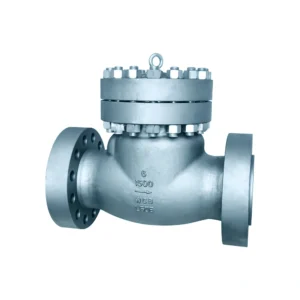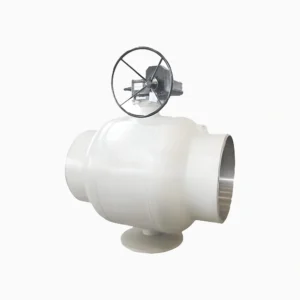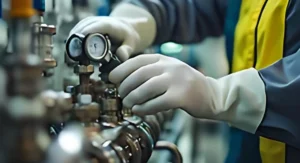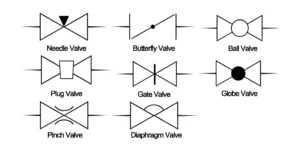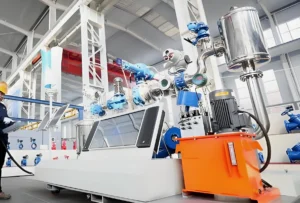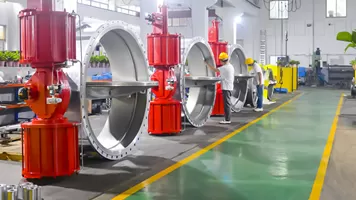What Does a Pressure Relief Valve Do? Understanding Its Vital Role in Safety and Efficiency
In many industrial and mechanical systems, pressure is a crucial factor that must be carefully controlled to ensure safety, efficiency, and longevity of equipment. One of the most important devices used to regulate pressure and prevent catastrophic failure is the pressure relief valve (PRV). Though often overlooked, pressure relief valves play a central role in protecting systems, equipment, and personnel from the dangers of overpressure.
In this article, we’ll take a deep dive into the functionality, applications, and importance of pressure relief valves. Whether you’re involved in industries like oil and gas, manufacturing, or even home plumbing, understanding how these valves work can help you appreciate their critical role in safeguarding equipment and ensuring operational safety.
What is a Pressure Relief Valve?
A pressure relief valve (PRV) is a safety device that automatically opens to release excess pressure from a system when it exceeds a preset level. These valves are essential components in systems that use pressurized fluids, such as steam, air, water, or chemicals. By preventing overpressure, the PRV protects equipment and people from potentially dangerous situations like explosions, leaks, or mechanical failures.
Pressure relief valves are commonly found in systems where the risk of over-pressurization is high, such as boilers, pressure vessels, pipelines, and even household water systems. The key function of the valve is to maintain a safe pressure level by releasing pressure once it surpasses the safe limit. This not only ensures the longevity of the system but also prevents costly repairs, downtime, or even disastrous accidents.
How Does a Pressure Relief Valve Work?
Pressure relief valves are engineered to perform a simple yet essential task: open when the pressure exceeds a certain limit. Here’s a step-by-step breakdown of how the valve functions:
-
Normal Operating Conditions: Under normal operating conditions, the pressure within the system remains within a safe range. The pressure relief valve remains closed, and the system operates as usual.
-
Pressure Build-Up: As the system continues to function, the pressure within the pipes, tanks, or vessels gradually increases. This can happen due to various factors such as changes in temperature, fluctuations in external pressure, or system malfunction.
-
Triggering the Valve: When the pressure reaches the preset value (the set point), the pressure relief valve is triggered. It opens to allow the excess pressure to escape, preventing it from causing damage to the system.
-
Pressure Relief: Once the excess pressure is released, the pressure inside the system drops back to a safe level. The valve then closes automatically, resuming normal operation.
-
Reaching Equilibrium: The valve continuously monitors the pressure to ensure that it stays within the safe range. If pressure increases again, the cycle repeats.
The simplicity of the mechanism is what makes the pressure relief valve so effective. Whether it’s a spring-loaded valve, a pilot-operated valve, or a balanced bellows valve, the core function remains the same: protecting the system from over-pressurization.
Types of Pressure Relief Valves
Pressure relief valves come in several types, each suited for specific applications and systems. Let’s explore some of the most common types:
1. Spring-Loaded Pressure Relief Valve
- This is the most common type of pressure relief valve used in various systems. It consists of a spring mechanism that holds the valve in a closed position. When the pressure exceeds the spring’s resistance, the valve opens to relieve excess pressure.
2. Pilot-Operated Pressure Relief Valve
- Pilot-operated valves are typically used in larger, high-pressure systems. A pilot valve controls the opening and closing of the main valve. These valves are more responsive and provide precise control over pressure relief, making them ideal for complex systems.
3. Direct-Acting Pressure Relief Valve
- In this type of valve, the pressure directly affects the valve, causing it to open when the pressure exceeds the set point. It’s typically used in applications where the fluid is gaseous or there’s a need for very quick pressure release.
4. Balanced-Bellows Pressure Relief Valve
- This valve uses a bellows mechanism to maintain balance and prevent the valve from opening prematurely due to changes in temperature. It’s particularly useful in applications where temperature fluctuations are significant.
5. Temperature Relief Valves
- These valves are designed to open in response to high temperatures. While not purely focused on pressure, they often serve a dual function in systems where both pressure and temperature are critical factors.
Why Are Pressure Relief Valves Essential?
Pressure relief valves serve as the final line of defense in protecting mechanical systems, personnel, and the environment. Here’s why they are so essential:
1. Safety
- The primary function of a pressure relief valve is to ensure the safety of people and equipment. Overpressurization can lead to catastrophic failures, such as tank ruptures, explosions, or pipe bursts. The pressure relief valve helps mitigate these risks by releasing excess pressure when it becomes dangerous.
2. System Longevity
- By maintaining pressure within safe limits, pressure relief valves help reduce wear and tear on equipment. This can significantly extend the life of pumps, boilers, pipelines, and other machinery that relies on pressurized systems.
3. Cost Savings
- Preventing overpressure not only saves lives but also helps reduce repair costs and downtime. Replacing or repairing equipment that’s been damaged by overpressure can be costly. The pressure relief valve helps avoid these expenses by preventing the damage in the first place.
4. Compliance with Regulations
- Many industries, such as pharmaceuticals, chemicals, and oil and gas, must adhere to strict safety regulations. Pressure relief valves are often a mandatory safety feature in these industries to comply with government safety standards and to prevent accidents.
5. Operational Efficiency
- Pressure relief valves help keep systems operating smoothly and efficiently by preventing excessive pressure buildup. This is especially important in complex systems where multiple components rely on stable pressure levels for optimal performance.
Common Applications of Pressure Relief Valves
Pressure relief valves are used in a wide range of industries and applications. Here are some of the most common ones:
1. Oil and Gas Industry
- In the oil and gas sector, pressure relief valves are critical for protecting pipelines, pressure vessels, and storage tanks from overpressure. These systems often operate under high-pressure conditions, making pressure relief valves indispensable for ensuring safety.
2. Manufacturing
- In manufacturing plants, pressure relief valves are used in steam boilers, air compressors, and hydraulic systems. These valves help ensure that pressure doesn’t exceed safe operating levels, preventing machinery breakdowns and safety hazards.
3. Household Plumbing Systems
- Pressure relief valves are also commonly found in household plumbing systems, especially in water heaters. They prevent the water heater from building up excessive pressure, which could lead to dangerous explosions or leaks.
4. Food and Beverage Industry
- In industries like food and beverage processing, pressure relief valves are used in sterilization processes and other critical systems where pressurized steam is involved. These valves ensure that the pressure doesn’t exceed the safety limits during the production process.
5. Pharmaceutical Industry
- Pharmaceutical plants require highly regulated environments where pressure and temperature control are crucial. Pressure relief valves ensure that these conditions are met without risking over-pressurization that could lead to contamination or system failure.
Choosing the Right Pressure Relief Valve
Selecting the appropriate pressure relief valve for a specific application depends on various factors, including the type of fluid, the system’s pressure rating, and the required safety standards. Here are some factors to consider when choosing a pressure relief valve:
- Set Pressure: Determine the pressure limit at which the valve should open. This is typically determined by the system’s design and safety requirements.
- Flow Capacity: The valve must be able to relieve enough pressure to bring the system back to a safe level within a reasonable amount of time.
- Material Compatibility: The valve should be made of materials that are compatible with the fluids in the system, whether they are gases, liquids, or corrosive substances.
- Size and Connection: Ensure the valve fits within the system and can be connected correctly to prevent leakage or malfunction.
Pressure reducing valve guide
In any pressurized system, whether in a factory, a power plant, or even in your home plumbing, pressure relief valves are absolutely essential. They act as safety devices that protect the system from dangerous overpressure scenarios, ensuring safe, efficient, and long-lasting operation. By understanding the types, functions, and applications of pressure relief valves, industries can better appreciate the role they play in keeping both equipment and personnel safe from harm.
If you are responsible for the design, maintenance, or operation of any pressurized systems, ensure that your system is equipped with the correct pressure relief valves and that they are maintained regularly. Doing so will provide peace of mind and help avoid costly breakdowns and accidents in the future.


